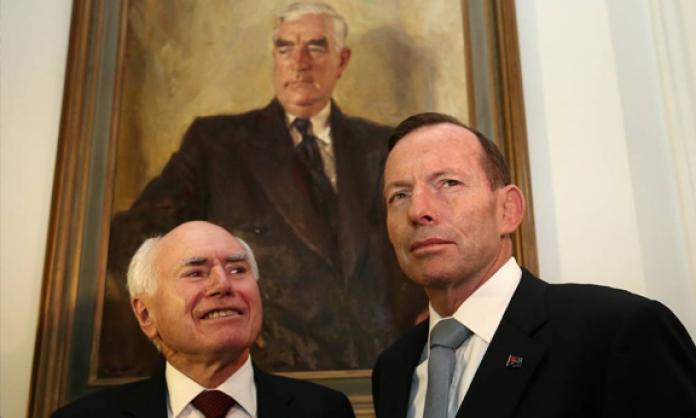The supposedly left wing ABC has allowed former prime minister John Howard to indulge his love affair with “Ming the Merciless” and totally rewrite history in the new documentary series Howard on Menzies: building modern Australia.
First, a personal disclaimer of raw class hostility: growing up in a blue collar working class family in the 1950s and 1960s, we detested everything Bob Menzies symbolised.
We knew that the arrogant “British to the bootstraps” Menzies, with his posh voice and superior ways, his fawning over the monarchy and the rich and powerful, loathed people like us – the common herd who did not speak “proper”. The feeling was entirely mutual. What made it even worse was that this bastard was our local MP!
But the cunning opportunist Menzies cannot be dismissed as just some fuddy duddy conservative. He was the consummate representative of the big end of town, grinding down workers to maximise profits.
In the 1930s, Menzies, like the bulk of conservative politicians, was an open admirer of Adolph Hitler – a basic truth that Howard naturally omits from his story. After touring Nazi Germany in 1938, Menzies wrote that the “abandonment by the Germans of individual liberty and of the easy and pleasant things of life has something rather magnificent about it … they have erected the state, with Hitler as its head, into a sort of religion which produces spiritual exaltation that one cannot but admire”.
The war discredited fascism and in the 1940s Menzies reinvented himself as the supposed defender of individual freedom and the champion of middle class “forgotten people” against big government and grubby workers.
As prime minister from 1949 to 1966, Menzies did his utmost to ensure that the benefits of the postwar boom flowed overwhelmingly to the likes of BHP and the banks. In the late 1940s and early 1950s, there was a concerted ruling class assault on the unions, which pushed up the rate of exploitation. Workers’ share of national income fell sharply in the first years of his government and took many years to recover.
The prosperity of the boom years was nowhere near as uniform as portrayed in documentaries like this. There remained considerable pockets of poverty, inner-city slums, third-rate overcrowded schools, shoddy Housing Commission homes and new working class suburbs with virtually no amenities.
Workers’ lives were still marked by the hard grind of long hours of exhausting manual labour, from which there was little prospect of their children escaping. My father worked an average of 80 hours a week throughout the Menzies years.
This meant, in spite of a marked fall in strike action, that an understanding that society was divided on class lines did not disappear from workers’ consciousness. This was reflected in high levels of union membership (peaking in 1955-56 at 61 percent of the workforce) and a surge of rank and file pressure for improved wages and conditions from the mid-’60s onwards.
Even in those authoritarian Cold War years, workers were far from embracing all the “respectable” middle class values so beloved by John Howard. Underneath the conformist surface, there were deep tensions in society that were to explode in an upsurge of radicalism in the late ’60s.
These tensions were inflamed by Menzies’ imposition of conscription on 20-year-olds for the murderous war in Vietnam. He resigned as PM in January 1966 and thus managed to escape the radical wave that engulfed his successors.
I will leave the final word to left wing Labor MP Eddie Ward, who in a speech in 1944 called Menzies a “posturing individual with the scowl of Mussolini, the bombast of Hitler and the physical proportions of Goering”.









